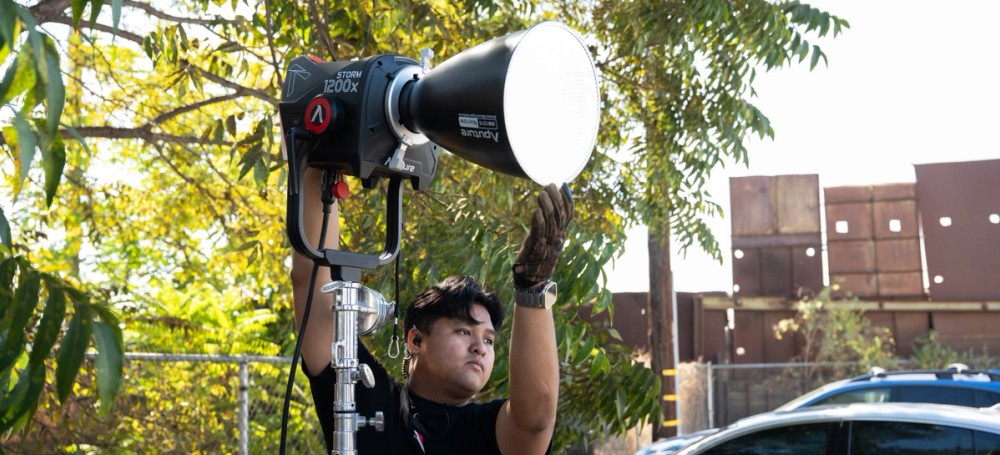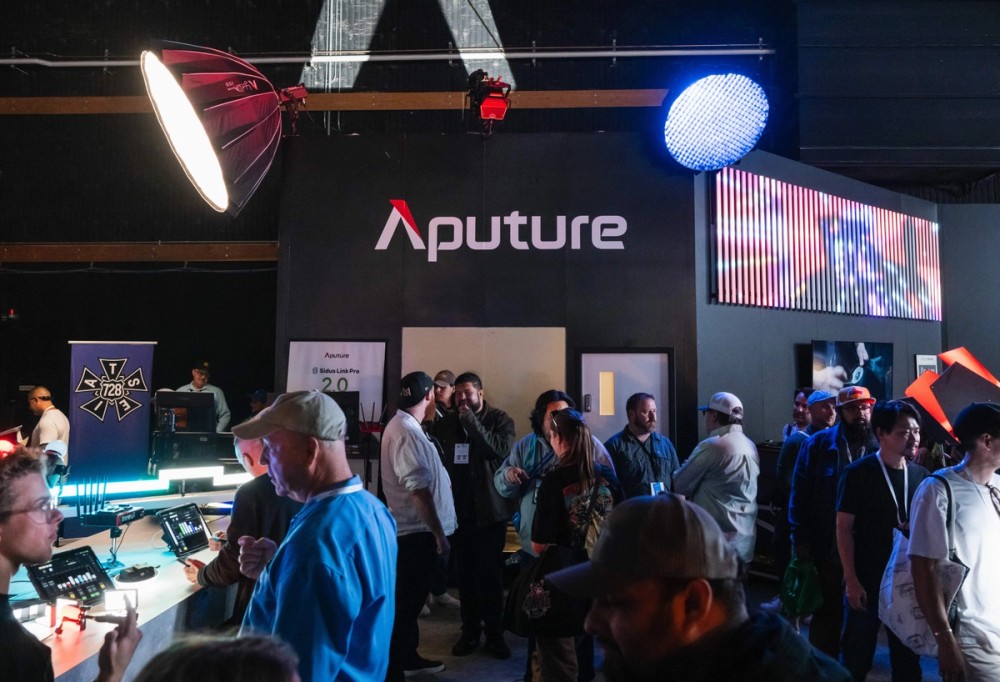Two White Light Standards
Aputure STORM and NOVA lights have a System Settings menu for switching “White Light Standard” between CIE Daylight and Black Body. What does this mean, and how should it be used?
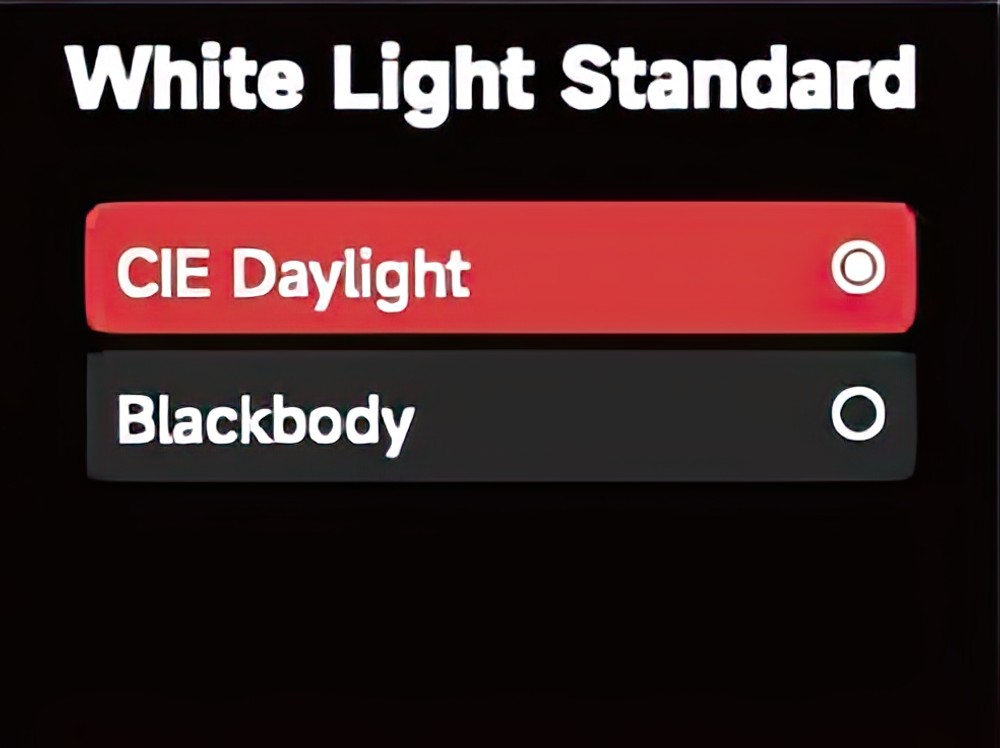
The System Settings menu for switching “White Light Standard”
The Very Short Answer
Black Body is a theoretical white light standard, while CIE Daylight is a real world white light standard.
You should use Black Body when matching to other lights that are designed around that theoretical white, and use CIE Daylight when matching to actual natural daylight.
But how does that work?
Understanding White Light
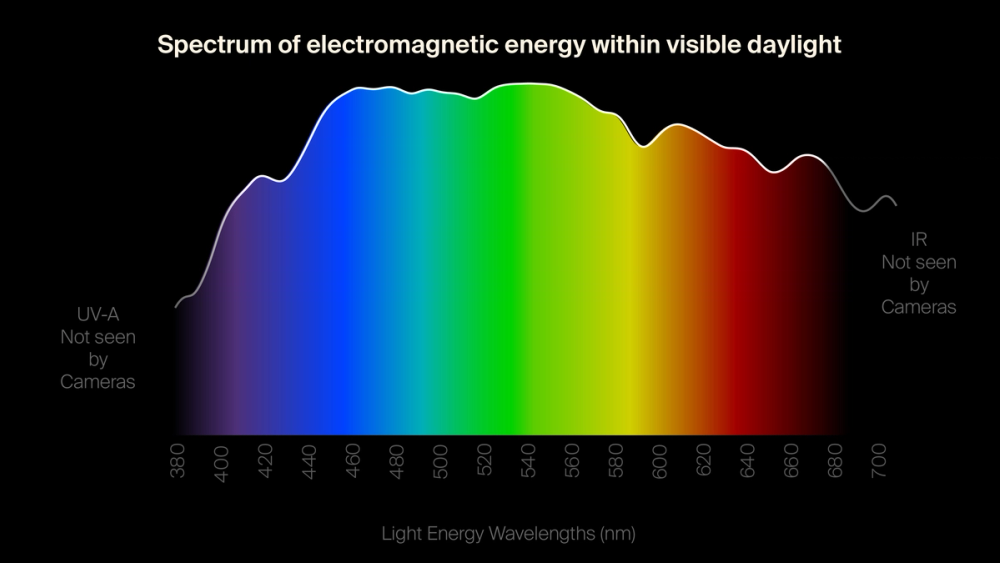
Figure 1: The spectrum of electromagnetic energy in visible daylight
The answer lies in how we understand “white light” in its physical definition. White light encompasses the spectrum of all the energy frequencies in visible light: from the far red just below infrared, through the greens, and up into the blues and violets beside ultraviolet. In simplest terms, “warm” to “cool” white light color variations indicate the relative strength of red energy to blue energy. But of course, a more detailed technical explanation exists for defining white light for photography.
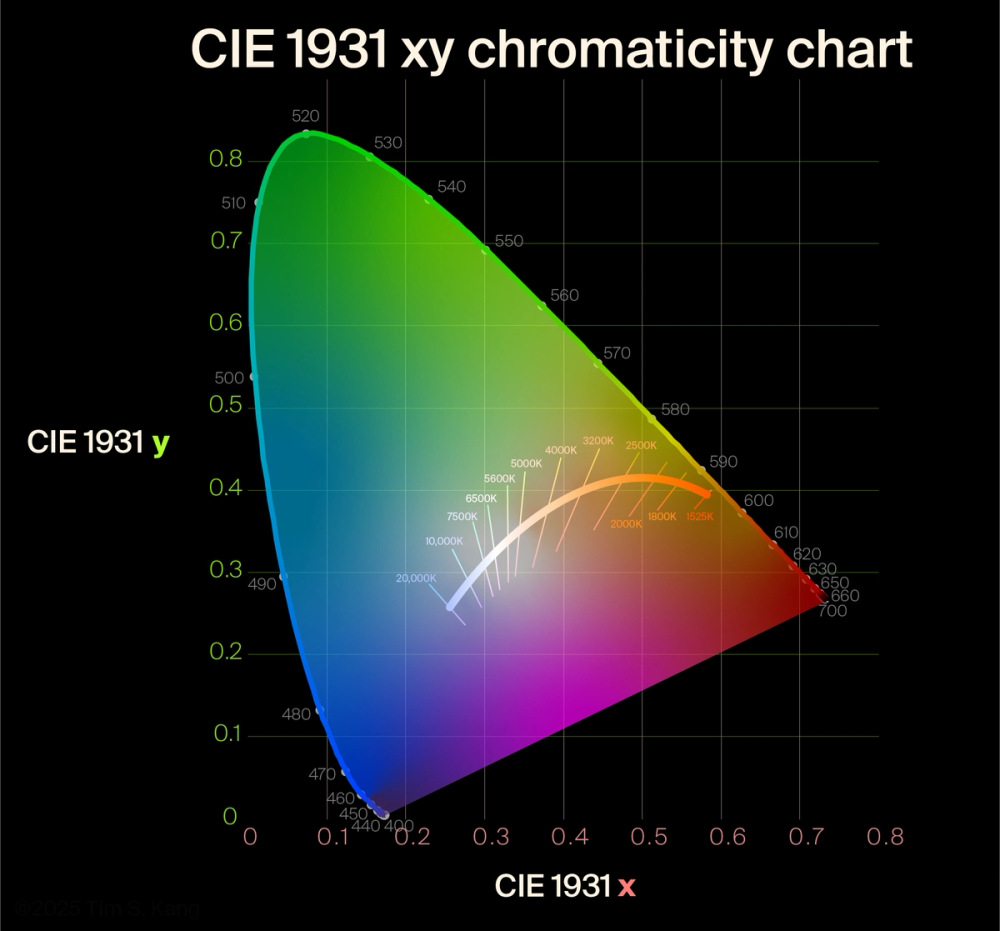
Figure 2: The CIE 1931 x, y chromaticity chart, with Black Body Curve and pure saturated color reference values
We need a common language to describe saturated colors, shades of white light, and everything in between. This graph, created in 1931 by the Commission Internationale de l’Éclairage (the International Commission on Illumination, or CIE), plots how a standardized “observer”—a theoretical “camera” with three component channels designed to represent average human color perception—interprets all light variations into a balance of three color intensities: salmon pink, bright lime green, and deep blue.
If one scales these intensities down into a relative % ratio of x, y, and z channels, respectively, then only plotting x and y is needed to represent each trio. The loss of intensity turns “colors” into “chromaticity”, or hue and saturation only. We then map out these x and y ratios within a two-dimensional space encompassing the full range of human color perception. Hence, this graph becomes the familiar CIE 1931 “color space” chart. This interpretation of light and color plotting method forms the basis of all video color standards.
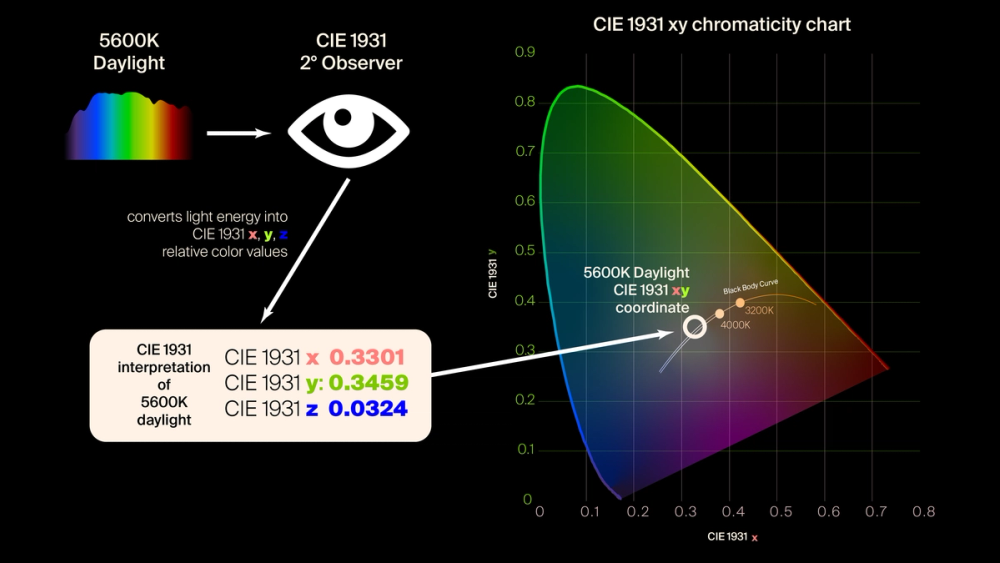
Figure 2: The CIE 1931 x, y chromaticity chart, with Black Body Curve and pure saturated color reference values
Along the edges of this space, the colors are the most pure and therefore represent the most saturated possible light. Moving towards the middle represents the color of different light frequencies mixing, causing them to desaturate until they turn white. But white light is not merely a single color spot.
Black Body: The Theoretical Model
This is where the physics term “Black Body Emitter” enters. If one heats a theoretical object to make it glow, the light appears reddish at lower temperatures and shifts increasingly towards blue as the temperature rises. At 2000 degrees Kelvin (2000K), the light appears as orange. At 3200K, it appears amber, and at 5600K, it appears more blue. At all of these temperatures, the Black Body glows a “white” light, with all of the visible light frequencies emitted, but with some more than others. The CIE 1931 color associated with a given Black Body temperature spectrum is called “Color Temperature (CT).”
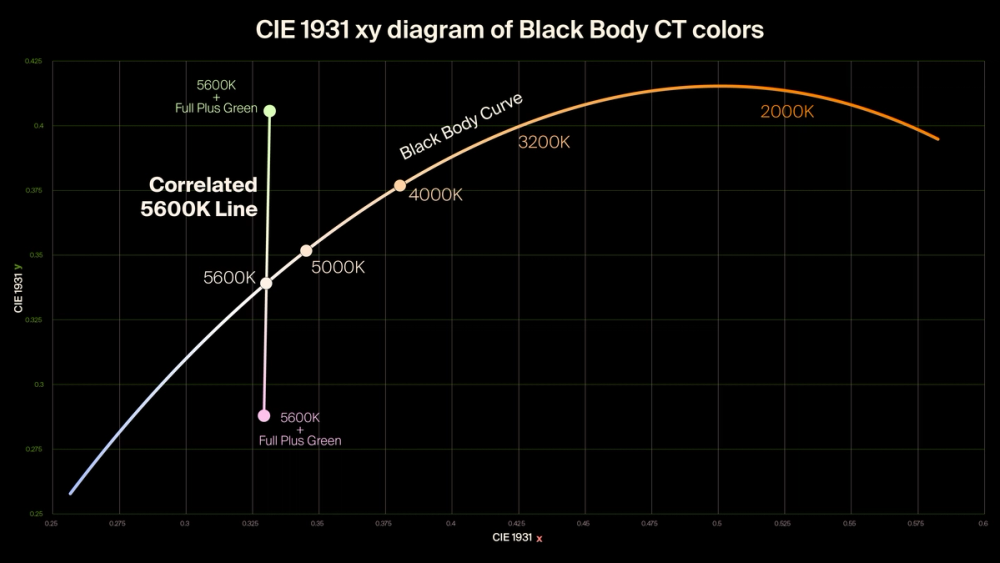
Figure 4: A CIE 1931 x, y chromaticity plot of the Black Body Curve and how green or magenta skewed white light correlates to a reference color temperature
These CT values can be charted as a curved line of color coordinates on the CIE1931 chart, and trace a color path known as the Black Body Curve (aka the Planckian Locus, named after physicist Max Planck). Any light producing similar colors with different energy produces a CIE 1931 “correlated color temperature” (CCT), and can deviate green or magenta from the CT value with a similar ratio of blue and red energy. For example, a color meter will still report “5600K” as the CCT for green and magenta variations along the “Correlated 5600K line.”
So the Black Body Curve describes the ideal CT color values for white light. But what then is CIE Daylight, and why would I use it over Black Body?
CIE Daylight: The Observed Model
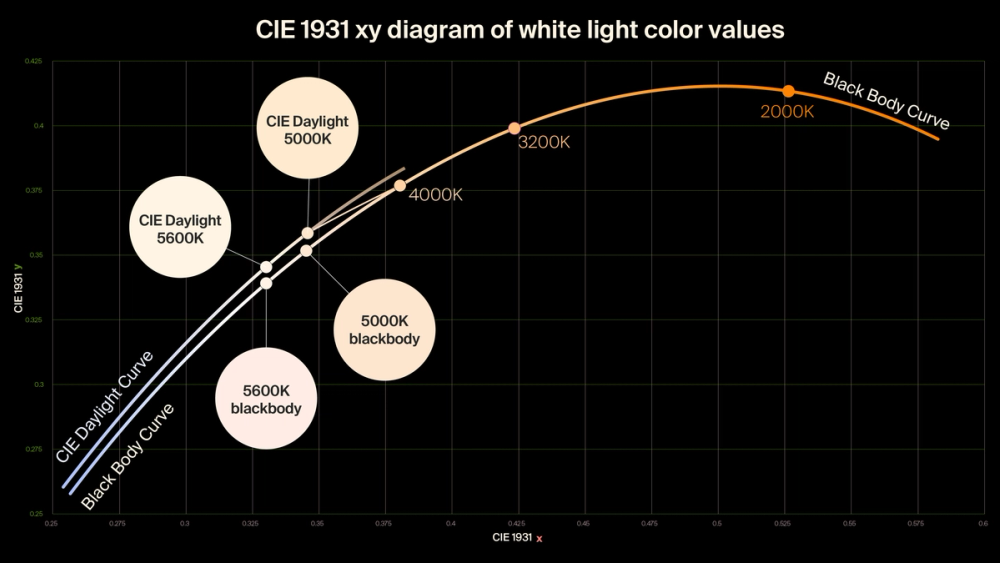
Figure 5: A CIE 1931 x, y chromaticity plot showing both CIE Daylight and Black Body Curves
A bit more first on the Black Body Curve. It is a theoretical range of light devised by physicists working with mathematical formulas. But we live on planet Earth, and that means that we have an atmosphere through which light must pass. As sunlight passes through the Earth’s atmosphere, its spectrum slightly shifts a tiny amount more green. To replicate this, the CIE averaged daylight spectrum from around the world at varying CCT values to create the “CIE Daylight Series,” its daylight spectrum standard. The resulting CIE 1931 observer color ratios generate an xy curve that tracks parallel to the Black Body Curve, but shifted slightly toward green.
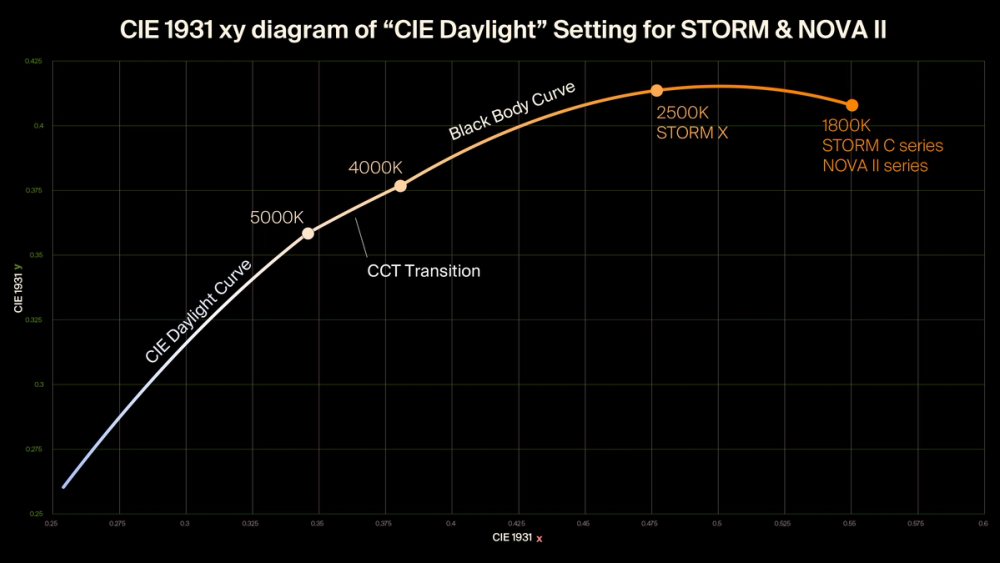
Figure 6: A CIE 1931 plot of the “CIE Daylight” setting in Aputure STORM and NOVA II series fixtures
To bridge this color gap, Aputure follows the IES TM-30 standard by using Black Body at lower CCT values and gradually shifts from Black Body to CIE Daylight color as the CCT approaches natural daylight values. Below and at 4000K, the two curves are the same blackbody definition. Between 4000K to 5000K, the color progressively shifts green towards the CIE Daylight Curve duv of 0.0032 (delta u,v; the official measurement system for +/- green shift away from the Black Body Curve). At and above 5000K, the two curves run parallel, with CIE Daylight maintaining the 0.0032 green shift from Black Body. To the eye, this shift appears similar to one eighth plus green lighting gel added to a Black Body light.
Choosing Between Black Body and CIE Daylight in Practice
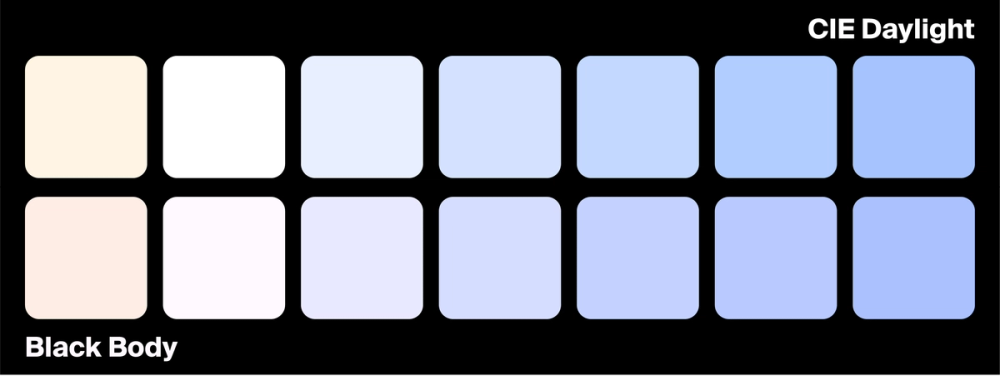
Figure 7: This calibrated digital chart illustrates the slight green versus magenta shift between CIE Daylight and Black Body for different CCT values. The top row represents CIE Daylight, and the bottom row represents Black Body.
So, when would one use the Black Body setting or the CIE Daylight setting? Many LED fixtures follow the Black Body Curve, and often drift further magenta in daylight CCT ranges. If you are working on a set utilizing lights designed this way, you can easily match these legacy units by setting your STORM or NOVA lights to “Black Body” in the White Light Standard menu.
If you are working in situations where you need to match actual daylight, then use CIE Daylight. Under warmer CCT light, such as tungsten-equivalent 3200K, the two curves are identical, so you can leave this setting on most of the time.
And of course, all STORM and NOVA lights have adjustable +/- green percentage levels corresponding to actual plus and minus green lighting gel corrections. They can be fine-tuned well beyond the preset range of either curve, so you can adjust these lights easily to match lighting conditions in any situation.
The STORM and NOVA lights ship with default settings to CIE Daylight. In most situations, this will be the preferred color curve. Now you know why.
For more information, visit our help center.
